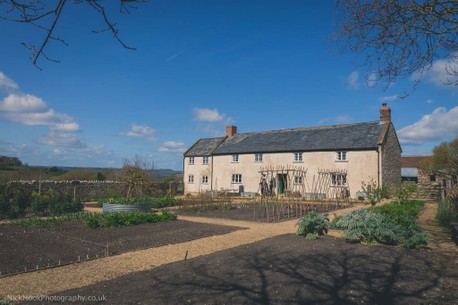Will's garden diary - time to get planning!
We catch up with head gardener Will Livingstone to find out what's going on in the River Cottage kitchen garden.

The low morning sun and glistening frost of November gives the Kitchen garden a silent beauty, making it one of my favourite months. We have a resident robin that follows us around the garden with an expectant gaze, waiting for us to turn up some interesting morsels during our continued cultivation. Garden tasks have undoubtedly slowed down, but as November is the time when heavy frosts and relentless rain are frequent, we need to plan our time well.

I love celeriac! Sounds mad, but despite my evident geekiness I have very good reason. With one of the longest seasons of all the veg, it needs space dedication and regular attention during the summer months. Keeping young plants weed free and well spaced is important, as I find overcrowding really inhibits growth. Sow in February undercover, planting out in May/June at 30cm apart. Planting in fertile soil coupled with consistent moisture should give you good sized celeriac in November. Remove the lower leaves as the stem base develops, allowing swelling and reducing distortion. The most widely available organic variety is Prinz, which I tend to stick to as it offers a medium sized, deliciously sweet winter veg. If you’re looking for something a bit bigger try Giant Prague. Every bit of the celeriac is good to eat. The leaves and roots are delicious deep-fried and salted as a celeriac crisp, and the rest adds a delicious creamy celery flavour to mash, purées, soups and stews.
As the weather becomes more severe, protect tall brassicas from strong winds by staking with a stout stick. Netting can also be useful to protect the precious leaves from hungry pigeons. I find a shotgun can be just as affective… Any remaining half-hardy perennials should be brought inside or fleeced on the colder days, protecting them from falling temperatures.
As a gardener at River Cottage my job description stretches much further than just growing vegetables. We have 90 acres of land to look after including a few acres of woodland – in which there is the remnants of a forgotten hazel coppice, willow woven duck ponds and miles of new and old hedges. So during this month, as well as easing the garden into winter, we continue to chip away at various renovation projects on the farm. Last year the hazel coppice was on the agenda. By removing the over stood trunks of the stools right down to ground level, we are enabling the regeneration of multi-stemmed straight sticks for use in the garden in the coming years as well as allowing light to penetrate the woodland floor, sparking a multitude of flora to emerge. We can start coppicing from the end of November to February during dormancy. If you have the space I would recommend planting some hazel. Although patience is required, eventually it will offer the best bean poles and pea sticks, negating the use of imported bamboo.
You can join Will at his Garden Open Day on 4 April 2016, find out more here.
News archive
You can use our archive below to browse previous blog articles.
-
2024
-
2023
-
2022
-
2021
-
2020
-
2019
-
2018
-
2017
-
2016
-
2015
-
2014